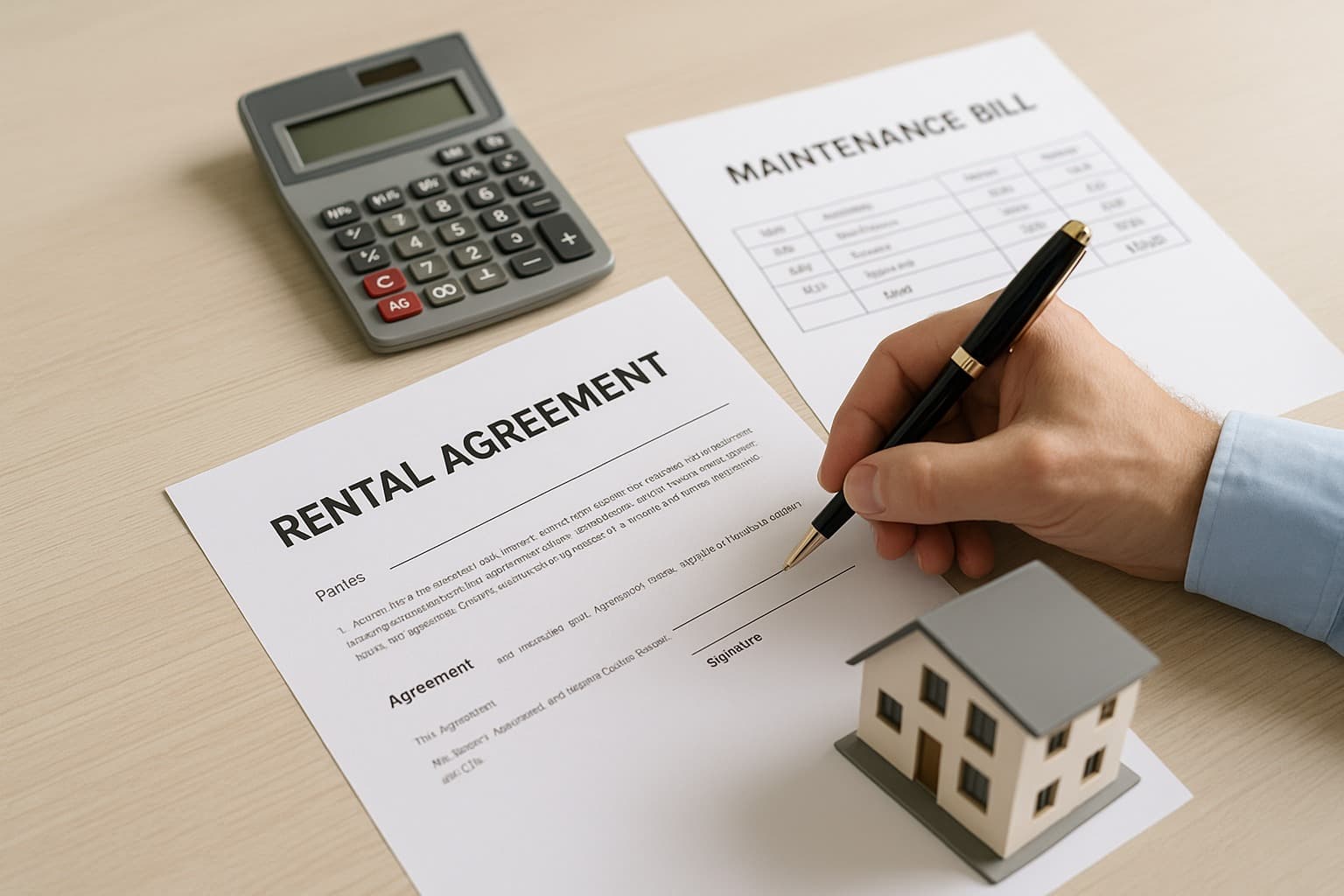Best Practices for Rental Property Owners in India 2025
Summary
Maximize rental property success in India for 2025! Learn best practices, from tenant screening and property maintenance to legal safeguards and tech integration, for consistent income and long-term growth.

Owning a rental property in India can feel like juggling two worlds at once. On one hand, it’s a source of steady income and long-term wealth. On the other, it comes with tenant hassles, maintenance worries, and fluctuating rental returns. Many first-time landlords dive in with dreams of easy money, only to discover that success in rental property ownership is far more nuanced.
The difference between a profitable landlord and a frustrated one isn’t luck — it’s strategy, preparation, and attention to detail. In 2025, Indian rental markets are evolving rapidly, driven by urbanization, the rise of young professionals, metro expansion, and shifting lifestyle demands. For property owners willing to adopt best practices, the opportunities for high rental yield and property appreciation have never been greater.
🏠 Choosing the Right Property
Everything starts with the property itself. Location, type, and accessibility directly affect both tenant demand and rental yield.
Location, location, location: Proximity to workplaces, schools, hospitals, and metro stations can drastically reduce vacancy periods. Cities like Bangalore, Pune, Hyderabad, and Mumbai remain hotspots for rental demand, especially near IT parks or commercial hubs.
Property type: 1-2 BHK apartments are often quicker to lease and attract students, young couples, or small families, while 3-4 BHK units command higher rent but may stay vacant longer.
Neighborhood growth potential: Investing in emerging areas near metro expansions or highway corridors can provide double benefits: rental income and capital appreciation.
💡 Human insight: A property near a planned metro line may feel inconvenient today, but within 3–5 years, it could become one of the most sought-after rental destinations in the city.
🔍 Tenant Screening: Protect Your Investment
The right tenant is the foundation of a successful rental property. Poor tenant selection can lead to delayed rent, property damage, or legal disputes.
Background and credit checks: Ensure your tenant has a stable income and a clean payment history.
References: Previous landlord recommendations often reveal how a tenant respects property and neighbors.
Lease clarity: A clear, written agreement specifying rent, deposits, maintenance responsibilities, and rules reduces misunderstandings.
💡 Pro tip: Take your time in selecting tenants. A month of vacancy is better than a year of headaches.
💰 Maximizing Rental Yield

Increasing rental income doesn’t always mean hiking rent arbitrarily. Strategic approaches can enhance yield and tenant satisfaction.
Regular maintenance: A clean, well-maintained property attracts quality tenants and justifies higher rent.
Furnishing upgrades: Semi-furnished or fully-furnished units often command 15–20% higher rent.
Modern amenities: Wi-Fi readiness, modular kitchens, or security systems significantly increase perceived value.
Flexible leasing options: Short-term leases appeal to students and professionals, while long-term leases ensure stability.
💡 Insight: Small investments in minor upgrades — like LED lighting, security cameras, or smart locks — can dramatically improve rental appeal without breaking the bank.
🛠️ Proactive Maintenance
Neglecting maintenance is one of the biggest mistakes landlords make. Issues left unattended can escalate into expensive repairs and angry tenants.
Scheduled inspections: Check plumbing, electrical systems, paint, and structural integrity periodically.
Prompt repairs: Address tenant complaints quickly — responsiveness builds trust and encourages lease renewals.
Professional management: If you own multiple properties, hiring a property manager can save time, reduce stress, and maintain consistent rental returns.
💡 Investor insight: A property in top condition not only fetches better rent but often enjoys faster appreciation in the market.
📑 Legal Safeguards and Lease Agreements
A detailed, legally compliant lease agreement protects both the landlord and tenant. India’s rental regulations, including RERA and state tenancy laws, have strengthened over the years, making it essential for landlords to be compliant.
Clearly define rent escalation clauses, maintenance responsibilities, and deposit return conditions.
Maintain proper documentation of payments, notices, and agreements.
Consider periodic legal reviews to ensure compliance with new regulations.
💡 Practical tip: Well-drafted lease agreements prevent disputes and give landlords peace of mind, making property management far smoother.
🤝 Relationship Management
Property management is not just about structures — it’s about people. A good landlord-tenant relationship can reduce turnover, late payments, and conflicts.
Open communication: Respond promptly to queries or concerns.
Transparency: Keep tenants informed about rent adjustments or maintenance schedules.
Empathy: Flexible approaches during emergencies or unforeseen circumstances can foster loyalty and long-term tenancy.
💡 Psychology matters: Tenants who feel respected and valued are more likely to maintain the property, renew leases, and recommend it to others.
💻 Leveraging Technology
Digital tools are revolutionizing rental property management in India:
Rental portals: Platforms like 99acres, Magicbricks, and NoBroker help list, screen, and manage tenants efficiently.
Maintenance tracking apps: Solutions such as SmartOwner and Housing.com streamline repair requests and monitor ongoing work.
Payment automation: Digital rent collection and reminders minimize late payments.
💡 Investor’s edge: Using technology not only saves time but also reduces errors and enhances tenant satisfaction.
⚖️ Avoiding Common Mistakes
Even seasoned landlords make errors. Awareness can save money and time:
Overpricing: Setting rent too high may leave your property vacant.
Neglecting upkeep: Deferred repairs can lead to significant losses and unhappy tenants.

Skipping legal formalities: Not registering agreements or ignoring local laws invites penalties.
Poor tenant selection: Rushed decisions can result in payment delays or property damage.
💡 Smart practice: Maintain a checklist covering maintenance, tenant screening, and legal compliance for every property.
🌟 Thinking Long-Term
Successful rental property ownership is a marathon, not a sprint. Long-term strategies ensure consistent income and asset growth:
Capital appreciation: Invest in areas with high growth potential for property value gains.
Tenant retention: Stable tenants reduce vacancy risk and maintain consistent cash flow.
Periodic upgrades: Keep the property competitive with modern amenities and repairs.
💡 Investor mindset: Treat your property as a business. Strategic reinvestment ensures a cycle of growing rental yield and property value.
🧠 Conclusion
Owning rental property in India in 2025 is both a challenge and an opportunity. Landlords who adopt best practices — choosing the right property, screening tenants carefully, managing maintenance proactively, leveraging technology, and nurturing tenant relationships — see consistent rental income, higher yields, and long-term wealth creation. The rental market is evolving with urbanization, metro expansions, and growing professional populations. By thinking strategically, acting responsibly, and staying informed, property owners can turn rental housing into a profitable, stress-minimized investment for years to come.
📌 Summary (100 Words)
Rental property ownership in India offers immense potential for passive income and long-term wealth, but success hinges on smart management and strategic practices. Key practices for 2025 include selecting high-demand locations, thorough tenant screening, maximizing rental yield through upgrades and amenities, and maintaining the property proactively. Legal compliance and well-drafted leases reduce disputes, while positive tenant relationships enhance retention. Leveraging digital tools simplifies management, and avoiding common mistakes like overpricing or neglecting maintenance ensures steady income. Landlords who adopt these practices can achieve consistent rental returns, property appreciation, and a profitable real estate portfolio in India.
